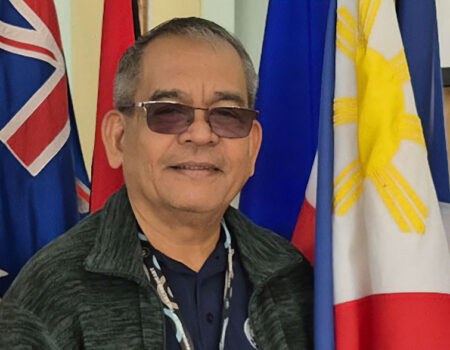Initial formation: Formation in the Midst of AI Era
Sunday March 30, 2025

A Reexamination of the Meaning of the Priestly and Religious Formation.
Introduction:
There was a belief and acceptance that a priest was holy simply by the fact of being a priest. He was thought to be highly educated and wise. The priesthood was the highest aspiration for a boy. It was even believed that it signified being a ‘real’ Christian, commanding respect and reverence akin to Christ himself. However, over time, the image has radically changed from generation to generation. Since Vatican II, several shifts have been observed. There is a transition from pedestal to participation, from sole authority to collaborative ministry, from monastic to secular spirituality, and from saving souls to liberating people. This reflects a move from the image of a cultic priest to that of a servant leader priest.
Hence, priests today are discovering a more profound and holistic identity to find the real meaning of the word Vocation. It confirmed that from the centuries past the spirituality of the priest was formed by the traditions and practices that were handed over by the Dominicans, Franciscan, Carmelites, Jesuits, etc., but today, the priests are committed to very rhythm of parish life; which demands to focus on social sin, intuitional evil and concern for justice, peace and liberation as the center of Christian life.
We live in a world where there is a search for new dimensions of human life. To discover these new dimensions, we need to understand and practise secular values today. Up until now, religious life has been impersonal. Today, we must place importance on the transpersonal. Previously, we focused on impersonal elements, but now we need to concentrate more on interpersonal relationships.
Knowledge about the Youth Today
Understanding today’s youth is vital. Proper knowledge is the best tool for becoming an effective mentor. Young people are those who look forward to a brighter future. Undeniably, youth are vibrant, energetic, enthusiastic, optimistic, and creative. Their bodies—senses, intellect, and will—are fully alive. They are also ready to face any risks in life. However, how often do we forget all the positive values of youth, and sometimes, our attempts at formation can suppress them? Instead of fostering growth, it can lead to deformation. It is often thought that youth are an immature group. Keeping this idea at the back of our minds and trying to shape them can result in failure. We need to remember the words of His Holiness Pope John Paul II:
“I believe in youth. Christ believes in youth; you are my precious treasure: tremendous ideal is before you: you are bearers of hope: let life be a song joy: you are not alone: be dynamic witness to the ester message: be radiant reflections of Christ: society is waiting for you. Christ is waiting for you: you are the dram of a new world: look beyond the limits of time and history: you can move the mountain: you will make history: the Church relies a great deal on you.” (John Paul II, I believe in youth, St. Paul editions. U.S.A., 1981). It is well known that no young ones believe that he /she shall die, their mind set is that they have plenty of time to live. The youth shall always search for the ways to live forever, that too to live very creatively. Hence, we would understand that to be young means to be optimistic, to be creative and to be innovative.”
Today, we no longer use ideas like: I help you; I form you, or you learn from me. Instead, it must be replaced with the idea of walking with you as a companion. The formators’ accompaniment should create a situation where the formandi can grow in confidence and engage fully in the formation process. We are in a culture where we not just form the formandi but create an environment that enables them to grow independently. Today’s formation program has shifted from forming youth to shaping the environment and building the circumstances under which their nature can grow to its fullness towards discipleship. Our goal is not to form them but to enable them to form themselves. Indeed, it is crucial to understand that we are not formators but animators. In our formation houses, we walk alongside the youngsters as they discover their original nature and grace.
A shift from Pedagogy to Andragogy and to Heutagogy in the Formation Methods
At Pedagogy Method: The learner is a dependent personality. The teacher determines what, how, and when anything is learned. The learner has few resources — the teacher devises transmission techniques to store knowledge in the learner’s head. Learn to advance to the next stage. Learning is subject-centred, focused on the prescribed curriculum and planned sequences according to the logic of the subject matter. Motivation comes from external sources — usually parents, teachers, and a sense of competition. Designs the learning process, imposes material, is assumed to know best.
Andragogy Method: In the Andragogy method, adults are independent. They strive for autonomy and self-direction in learning. Adults use their own and others’ experiences. Adults learn when they experience a need to know or to perform more effectively. Adult learning is task or problem-centred. Motivation stems from internal sources — the increased self-esteem, confidence and recognition that come from successful performance. Enabler or facilitator, climate of collaboration, respect and openness
Heutagogy Method: In this method, learners are interdependent. They identify the potential to learn from novel experiences as a matter of course. They can manage their own learning. The teacher provides some resources, but the learner decides the path by negotiating the learning. Learning is not necessarily planned or linear. Learning is not necessarily based on need but on identifying the potential to learn in novel situations. Learners can go beyond problem-solving by enabling proactivity. Learners use their own and others’ experiences and internal processes such as reflection, environmental scanning, experience, interaction with others, and pro-active and problem-solving behaviours. Self-efficacy, knowing how to learn, creativity, and the ability to use these qualities in novel situations, as well as working with others. Develop the learner’s capability. Capable people know how to learn, are creative, have a high degree of self-efficacy, apply competencies in novel and familiar situations, and can work well with others*.
Transformative Formation: Three Stages
The first stage is called the Informative stage. At this stage, the formators provide the young with accurate and proper information about the world and the surrounding conditions. There should be an environment where students are encouraged and motivated to fill their minds and hearts with all the necessary information that will help them form and mould themselves for their future mission. The youth are inspired to understand themselves, the world they live in, and the current evils of society, where they are expected to become the missionaries.
The second stage is the formative stage: It is another crucial phase where the youths are encouraged to actively engage in shaping themselves through the information they acquire daily. Here, the formator plays the role of an accompanist rather than simply imparting knowledge. The formators are expected to serve as signposts, guiding the young ones in the right direction.
The third stage is known as transformative: When youths are provided with proper information that helps them form their identities, we notice a transformation among them. This transformation is evident in their attitudes and virtues. Their transportive vision is expressed through their daily approach to their mission and vision. Therefore, the informative, formative, and transformative approaches lead young people towards holistic growth—becoming faithful missionaries.
Conclusion: The Integral Formation
There is uncertainty and confusion regarding the meaning of our vocation and the actual concerns that arise from it, particularly in the context of the prevailing worldliness, fundamentalism, the sexual scandals that have rocked the church, greed, unemployment, selfishness, political crises, poverty, class divisions, child labour, the globalisation of wealth and power, and the influence of mass media, among others.
We should create opportunities for formandi to contribute their skills and potential while challenging them with inspiring individuals. Transformation occurs through the everyday experiences of individuals, which, in turn, can influence others; therefore, formandi need to engage in this context. Both formators and formandi are on a journey to transform their lives into the full stature of Christ.
As a result, learners grow self-confident, responsible, and capable of making decisions. Formators need to motivate learners to engage with their education, highlighting the relevance of what they will learn. This approach fosters intrinsic motivation, encouraging them to become self-directed learners who take personal responsibility for their learning. The ultimate aim of formation is not only to produce experts or professionals but to develop leadership modelled after Christ, the Good Shepherd.
The integral formation offers ample space for growth, especially in developing methodologies that effectively nurture every aspect of a person’s development. Integral formation requires a focus on intellectual, emotional, spiritual, and social dimensions, ensuring a balanced and comprehensive approach. It is essential that every formator plays a crucial role in this process. They must remain open and receptive to the ideas, opinions, questions, doubts, and interests of those they guide. This openness cultivates an environment of mutual respect and trust, which are fundamental for meaningful learning and growth.
John Peter, MSC





